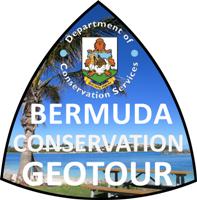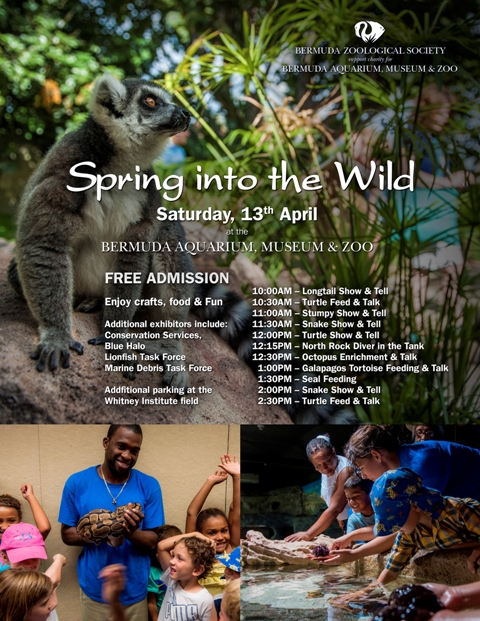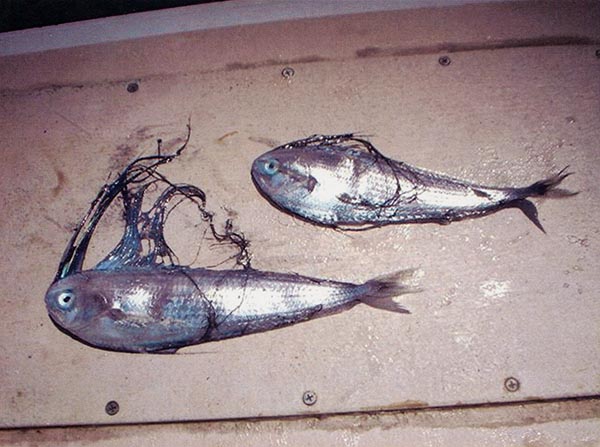 Minister of Environment and Planning, Sylvan Richards, announced the launch of Bermuda's first official GeoTour.
Minister of Environment and Planning, Sylvan Richards, announced the launch of Bermuda's first official GeoTour.
Click here to hear the full Royal Gazette article.
 Minister of Environment and Planning, Sylvan Richards, announced the launch of Bermuda's first official GeoTour.
Minister of Environment and Planning, Sylvan Richards, announced the launch of Bermuda's first official GeoTour.
Click here to hear the full Royal Gazette article.
 According to Mark Outerbridge, our Wildlife Ecologist, the 12 Bermuda Skinks that were flown to the Chester Zoo in the U.K have arrived safely and are now settling into their new home.
According to Mark Outerbridge, our Wildlife Ecologist, the 12 Bermuda Skinks that were flown to the Chester Zoo in the U.K have arrived safely and are now settling into their new home.
These skinks will be the focus of a captive breeding programme, which will ultimately provide information to Bermuda's Department of Conservation Services so that a conservation-oriented captive breeding programme can one day be started in Bermuda.
The ultimate goal of this programme is to help boost skink numbers at select sites by releasing young skinks back into the wild, and will be used in tandem with other management actions to help preserve this iconic island species.
For some more details about this project please click here to see the recent Royal Gazette article.
 Minister of Environment and Planning Sylvan Richards and HSBC CEO Richard Moseley formally opened the Cooper's Island Wildlife Viewing Tower with a ribbon-cutting ceremony yesterday morning (May 16th, 2013).
Minister of Environment and Planning Sylvan Richards and HSBC CEO Richard Moseley formally opened the Cooper's Island Wildlife Viewing Tower with a ribbon-cutting ceremony yesterday morning (May 16th, 2013).
The former NASA radar tower has been transformed into an ideal platform for viewing Cahows, Longtails and the annual migration of humpback whales. In addition, the tower offers spectacular views off the east end of the island, including Nonsuch Island.
 Related articles:
Related articles:Royal Gazette: Wildlife watchtower opened
Bernews: New Wildlife Viewing Tower for Cooper's Island

Thanks to our many Facebook fans we were able to track down the photographer of the Pomfrets photo featured in our previous post.
Stephen Cabral Jr took the photo in August 2005 while aboard the Nemesis. The Pomfrets were taken from the belly of a 109lb yellow fin tuna, hooked while out on Challenger Bank.
Stay tuned for the upcoming publication on recent new fishes reported from Bermuda.
 Pomfrets found in a tuna’s gut. Photographer unknown, can you help?
Pomfrets found in a tuna’s gut. Photographer unknown, can you help?
The Natural History Museum at BAMZ had received this photo of two pomfrets (Pteraclis carolinus) found in the gut of a yellowfin tuna caught on, or before, October 2005.
The pomfet is a new record for the species in Bermuda.
However, we don't know who took the photo! We would like to identify the photographer so that we can give that person credit in an upcoming publication on recent new fishes reported from Bermuda.
We hope that this photo will trigger a memory and the photographer can call the Museum Curator, Dr. Robbie Smith (299-2322) or email him at srsmith@gov.bm.
The Museum team is always interested to learn of interesting discoveries in our natural world and encourage you to let us know when you find or catch something unusual!
Whale Bones in Reef - Western Ledge Bermuda from Conservation Services on Vimeo.
While searching the reef to locate shipwreck sites for the making of our Bermuda shipwreck series we came across this collection of whale bones gathered amongst the coral.
We felt it provided an interesting contrast to the human structures lost on Bermuda's reef and also one that will potentially be relatively short lived; the organic material degrading and in this dynamic western reef area being eventually swept off the reef.
What was striking was that the collection was perfectly laid out as if on display in a museum hall - all the vertebrae lined up with each other. It tells a completely different story of loss from that of shipwreck but similar in that like a shipwreck the reef community surely salvaged what they could from the carcass and turned it into something else of use.
We have come to identify with these large and charismatic mammals, their grace and self controlled power and see them as ambassadors of our oceans. The bones have an odd visual elegance where they seem to settle almost harmoniously within the reef unlike most of our shipwrecks which were cataclysmic events for both people and the reef they landed on.
It is as if even in death we have something to learn from these creatures about how we should all aim to interact with our environment.
By Philippe Max Rouja PhD
Film made in a partnership between the Bermuda Underwater Exploration Institute, producer and cinematographer Adam Geiger and The Department of Conservation Services.
Caraquet 1864 - Bermuda Shipwrecks from Conservation Services on Vimeo.
The Caraquet was a British mail Iron steamship, approximately 200 feet long, sailing for the Royal Steam Packet Company in London.
Built in 1894, she sank on June 25th 1923 in fog on a rough sea after a miscalculation brought the ship to wreck on our northern barrier reef approximately 16 km to the north-west of Fort St. Catherine.
The Caraquet was extensively salvaged by Herbie Smith at the time of her sinking and then again after World War II, removing the larger portions of the non ferrous metal components of the ship; copper brass and bronze including coils conductors and propellers.
Today the wreckage is spread out over a wide area covering almost 2 acres in 35 to 40 feet of water. The most distinctive portions of the wreckage are her engine, four prominent boilers, (the large tin can shaped units in which steam pressure was built up to drive the engine), two large deck winches and her massive anchor, all of which are lying on top of the flattened collapsed hull and deck plates of the ship.
This wreck is a very well known dive site that is celebrated for its extensive wreckage in shallow clear water. The wreck has been heavily salvaged for her brass and bronze and continues to be battered by Bermuda’s annual winter storms.
The wreck was never lost and was always known as a fishing site.
This film is part of the Bermuda Shipwrecks Series filmed by Adam Geiger of Sea Light Pictures through a partnership between the Bermuda Underwater Exploration Institute and the Bermuda Government's Department of Conservation Services.
Divers featured in the videos are Mr Teddy Tucker OBE or Philippe Max Rouja PhD (Custodian of Historic Wrecks).
Planning and diving support also provided by Greg Stone of the New England Aquarium .
The Caesar - Bermuda Shipwrecks from Conservation Services on Vimeo.
The English brig Caesar was built at Cumberland, Co., Durham in 1814.
On May 17, 1818, while en route from Shields, England to Baltimore, she was wrecked on Bermuda's reefs.
The Caesar, under the command of Captain James Richardson was sailing with a crew of seven and a cargo of grindstones bricks medicine vials, decorated flasks, grandfather clock parts, glassware, white red and black lead oxide, and a marble cornice for a Baltimore church.
She was lost on a reef off the West End of Bermuda on the 17th May.
The ship was heavily salvaged at the time of her sinking and telltale evidence of this salvage operation can be found around several docks at the west end where parts of her distinctive cargo can be found.
The wreck was rediscovered lying in a sand hole in 35 feet of water in 1957 by Teddy Tucker who used Herbie Smiths old salvage boat “The Ruby” to salvage what remained of her cargo.
Results of this salvage effort can still be found around Bermuda. Over 500 bricks were recovered and used in the renovation of the old Rum Runners Building and many of the smaller grindstones were used to make pathways at many of the Islands hotels and other Bermuda homes.This salvage effort led to the discovery of one of the most unique elements of her cargo; very distinctive Masonic flasks. Some of these flasks were already in Bermuda collections and the riddle of their origin was only discovered after the Caesar was found. Their uniqueness identified them as being passed down since the time of the original salvage.Today the largest grindstones can be still found on the site sitting atop of the wooden remains of her hull.
Remains of porter bottles; glass necks and bases of black glass bottles are strewn throughout the sand hole and her exposed timbers, and lead birdshot collects in shallows on the site.Her remaining bottom timbers are clearly visible especially after the winter storm surges and she can be alternatively covered or exposed if there is an active hurricane season.
One of the most distinctive elements on the wreck itself is the remains of her cargo of grindstones.
This film is part of the Bermuda Shipwrecks Series filmed by Adam Geiger of Sea Light Pictures through a partnership between the Bermuda Underwater Exploration Institute and the Bermuda Government's Department of Conservation Services.
Divers featured in the videos are Mr Teddy Tucker OBE or Philippe Max Rouja PhD (Custodian of Historic Wrecks).
Planning and diving support also provided by Greg Stone of the New England Aquarium .